
What is Adobe Experience Cloud? It is a comprehensive solution for shaping customer experiences
Adobe Experience Cloud
7 April 2025
Table of Contents
-
- Introduction: The Era of Customer Experience Has Arrived
- What is Adobe Experience Cloud?
- Core Features and Architecture Analysis
- Real-World Use Cases
- Why Choose Adobe Experience Cloud?
- Industry Recognition and Global Accolades
- Pricing
- How to Get Started?
- Future Trends: AI and Privacy Compliance
- User Testimonials
- Conclusion: The Next Key Step in Creating Seamless Customer Experiences
- References
1. Introduction: The Era of Customer Experience Has Arrived
In today’s world, where digital transformation is sweeping across the globe, the focus of business competition has long shifted from product pricing or advertising volume to a more impactful long-term factor—Customer Experience (CX).
Why has “Experience” become the core of brand competition?
According to research by McKinsey and Forrester, a superior customer experience can effectively enhance brand loyalty, conversion rates, and customer lifetime value. Today’s consumers expect brands to instantly, personally, and consistently meet their needs in every interaction. Whether it’s searching for products on a website, receiving promotions via email, or asking questions on social media, every touchpoint is an opportunity for customers to evaluate a brand’s value.
When “experience” becomes the deciding factor, if the enterprise cannot grasp the whole picture and provide consistency, it may suffer an invisible loss of customers, and even let competitors seize the initiative.
The Three Major Challenges Faced by Businesses
Although the concept of being “customer-centric” has become a consensus, in practice, most businesses still face the following three major challenges:
Data Silos
Customer data is scattered across different departments and systems (CRM, website, marketing automation, e-commerce platforms, etc.), lacking integration, making it difficult for marketing teams to grasp a full-channel customer profile.
Fragmented Content
Different teams separately create content, materials, and advertisements, leading to inconsistent brand tones, duplicated investments, and inefficiencies.
Disconnected Journeys
Unable to connect the interaction journeys across websites, emails, social media, customer service, and other touchpoints, resulting in disjointed customer experiences that jump from one point to another, reducing conversions and loyalty.
In this context, businesses urgently need a solution that can integrate data, unify content management, and design consistent interactive journeys to truly achieve closed-loop optimization of the customer experience. This is precisely the original intention and value behind the creation of Adobe Experience Cloud.
2. What is Adobe Experience Cloud?
When businesses realize that “experience” has become a core competitive advantage, the key question becomes how to truly “execute an experience strategy.” Adobe Experience Cloud (abbreviated as AEC) is an integrated platform designed to help businesses bridge data, content, and interaction gaps to achieve a transformation in customer experience.
Definition in One Sentence:
Adobe Experience Cloud is a “customer experience hub” that integrates content, data, and journey management, enabling brands to provide consistent, real-time, and personalized interactions at every touchpoint.
Whether it’s B2C, B2B, or hybrid enterprises, AEC can assist brands in delivering cohesive and impactful customer experiences across every stage of the digital journey—from awareness, interaction, and conversion to loyalty.
Core Value: A Closed-Loop System from Analysis to Execution (See → Act → Optimize)
The greatest value of Adobe Experience Cloud lies in the fact that it is not just a single tool but rather a comprehensive experience management closed-loop system that allows businesses to:
- See: Gain deep insights into customer behavior and journeys through data integration and visualization tools.
- Act: Leverage AI-driven recommendations and automated workflows to engage customers with the right content and channels at the optimal time.
- Optimize: Continuously test, learn, and refine content and strategies to improve conversion rates and customer satisfaction.
This cyclical model—from “insights” to “execution” and then to “optimization”—helps businesses build competitive digital experiences.
Target Audience: A Collaborative Platform for Marketers, Data Teams, and IT Managers
The reason Adobe Experience Cloud is favored by enterprises across industries lies in its ability to serve not just one role but to promote cross-departmental collaboration, integrating the needs of three key functions:
- Marketing Teams: Quickly create, deploy, and personalize content to flexibly drive multi-channel marketing campaigns.
- Data and Analytics Teams: Integrate first-party and third-party data to gain insights into customer journeys and behavioral patterns, driving precise decision-making.
- IT Teams and System Architects: Ensure platform integration, security, and performance optimization while supporting enterprise-level scalability.
AEC acts like a “central control panel,” allowing these three roles to perform their duties while working together seamlessly, truly implementing a “customer-centric” strategy.
3. Core Functional Architecture Analysis
 The power of Adobe Experience Cloud lies in its modular architecture, which connects the three pillars of experience—Content, Data, and Journeys—to form a complete digital experience engine. This architecture is not only flexible and scalable but also adaptable to the growth stages of businesses, enabling true integrated customer experience management.
The power of Adobe Experience Cloud lies in its modular architecture, which connects the three pillars of experience—Content, Data, and Journeys—to form a complete digital experience engine. This architecture is not only flexible and scalable but also adaptable to the growth stages of businesses, enabling true integrated customer experience management.
3.1 Content Management Layer (Content)

Adobe Experience Manager (AEM)
Enterprise-Level Content and Digital Asset Management Platform
Provides content management capabilities for websites, mobile devices, and apps, while integrating digital assets (DAM). This allows brands to manage multilingual and multi-market content using a single platform, ensuring consistency and reusability.
Use Cases:
- Global brand website and regional site management
- Centralized management and permission settings for digital assets
- Integration with e-commerce and marketing campaign platforms to display product content

Adobe Workfront
Marketing Team Collaboration and Workflow Management Tools
Integrates project, resource, personnel, and progress management to enable visualization and optimization of the entire content production process.
Use Cases:
- Scheduling marketing campaigns and task assignments
- Integration with AEM to accelerate content approval processes
- Enhancing cross-departmental collaboration transparency and efficiency

Adobe Commerce
Enterprise-Level E-commerce Platform, Integrating Content and Business Logic
Supports B2C and B2B models, and integrates with AEM (Adobe Experience Manager) and RTCDP (Real-Time Customer Data Platform) to deliver personalized shopping experiences and intelligent recommendations.
Use Cases:
- E-commerce website content and product management
- Dynamic pricing and inventory display
- Multilingual and multi-currency support

Adobe GenStudio
Generative AI-Driven Content Production Platform
Utilizing generative AI tools such as Adobe Firefly, this platform helps marketers quickly produce images, slogans, and video materials, significantly shortening production cycles.
Use Cases:
- Rapid generation of multiple material versions
- Automatically generate copy based on audience characteristics
- Accelerate the production cycle for A/B testing materials
3.2 Data Insights Layer (Data)
Integrate first-party data to drive precise insights and actions.

Adobe Real-Time CDP (RTCDP)
Real-Time Unified Customer Data Platform
Integrates online and offline data, as well as first-party and third-party data, to build a "real-time updated" 360° customer profile, supporting real-time audience segmentation and action triggers.
Use Cases:
- Integrate CRM, website, app, and POS data
- Enable cross-channel personalized recommendations
- Trigger real-time message push based on offline customer behavior
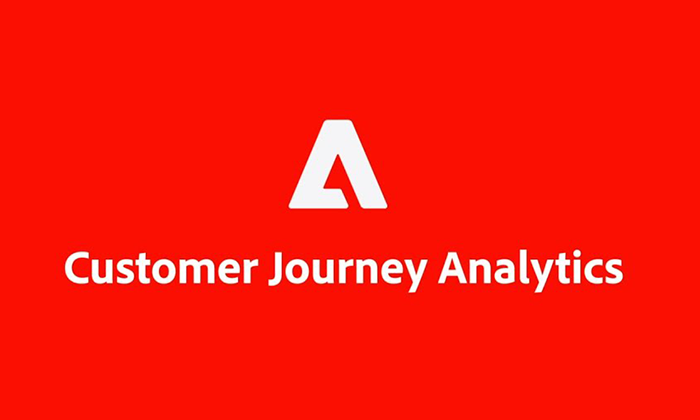
Adobe Customer Journey Analytics (CJA)
Cross-Channel Journey Visualization and Analytics Platform
Offers a drag-and-drop visualization interface similar to BI tools, integrating data from web, app, customer service, sales, and other touchpoints to explore full customer journey behavior patterns.
Use Cases:
- Analyze bottlenecks in the shopping funnel
- Track the complete path from engagement to conversion
- Differentiate behavioral patterns between new and returning customers

Adobe Analytics
Enterprise-Level Digital Behavior Tracking Platform
Allows customization of events and dimensions, supporting real-time reports, automated predictions, and AI-driven insights.
Use Cases:
- Analyze website interaction behaviors (clicks, scrolls, forms)
- Explore conversion factors such as device, region, and traffic source
- Detect abnormal behaviors and predict trends
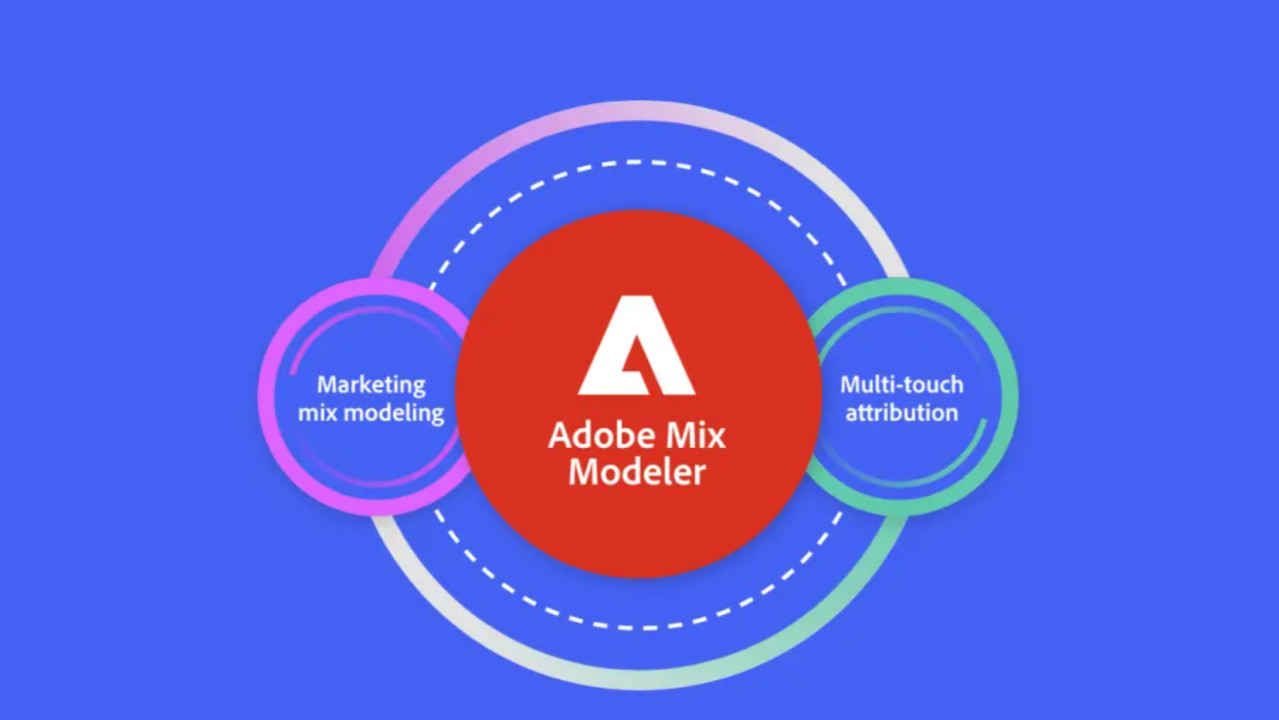
Adobe Mix Modeler
Multi-Touch Attribution and Marketing Investment Analysis Platform
Utilizes AI modeling to analyze the contribution of ads, social media, content, email, and other channels to the final conversion, providing ROI optimization recommendations.
Use Cases:
- Analyze the effectiveness of different media combinations
- Schedule optimized marketing budget allocations
- Predict the best combination strategy for future marketing campaigns
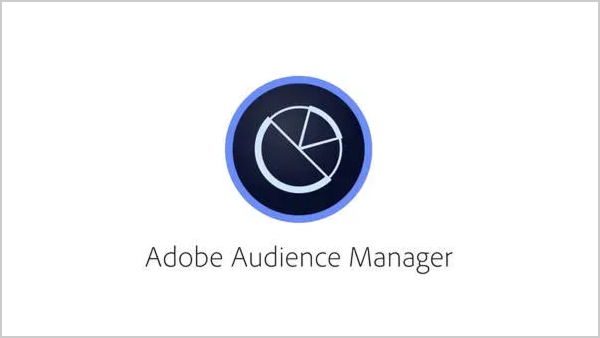
Adobe Audience Manager
Data Management Platform (DMP) Supporting Advertising Audience Modeling and Activation
Integrates third-party data and can interface with DSP platforms to enhance the precision of ad placements.
Use Cases:
- Precisely define retargeting audiences for advertising
- Expand reach by combining website data with partner data
- Collaborate on modeling and deployment with RTCDP (Real-Time Customer Data Platform)
3.3 Interactive Journey Layer (Journeys)
Design, execute, and optimize every customer journey.
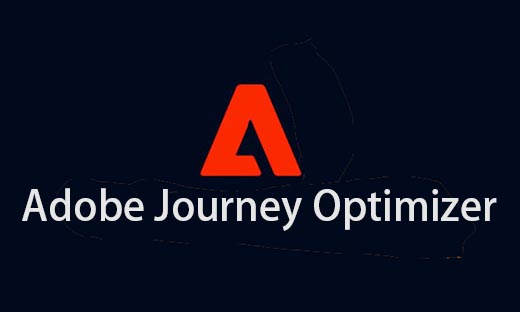
Adobe Journey Optimizer
Cross-Channel Automated Journey Orchestration Platform
Supports event-triggered and behavior-triggered actions, integrating with CDP and content resources to deliver personalized messages at the optimal time through the best channels.
Use Cases:
- Automatically initiate a welcome journey after a customer joins as a member
- Send reminders or recommendations based on shopping behavior
- Achieve "real-time, personalized, large-scale" communication

Adobe Campaign
B2C Multi-Channel Marketing Management Platform
Integrates channels including Email, SMS, Push, etc., supporting large-scale marketing campaign planning, audience segmentation, and performance tracking.
Use Cases:
- Newsletter design and batch sending
- Targeted push notifications for promotional activities
- Integration with RTCDP for more precise audience segmentation strategies

Adobe Marketo
B2B Lead Nurturing and Marketing Automation Platform
Supports lead scoring, sales collaboration, content nurturing, and behavior tracking, serving as a core tool for the B2B marketing conversion process.
Use Cases:
- Design nurturing workflows based on leads' positions and behaviors
- CRM integration to convert into sales leads
- Automate personalized newsletters, content recommendations, etc.
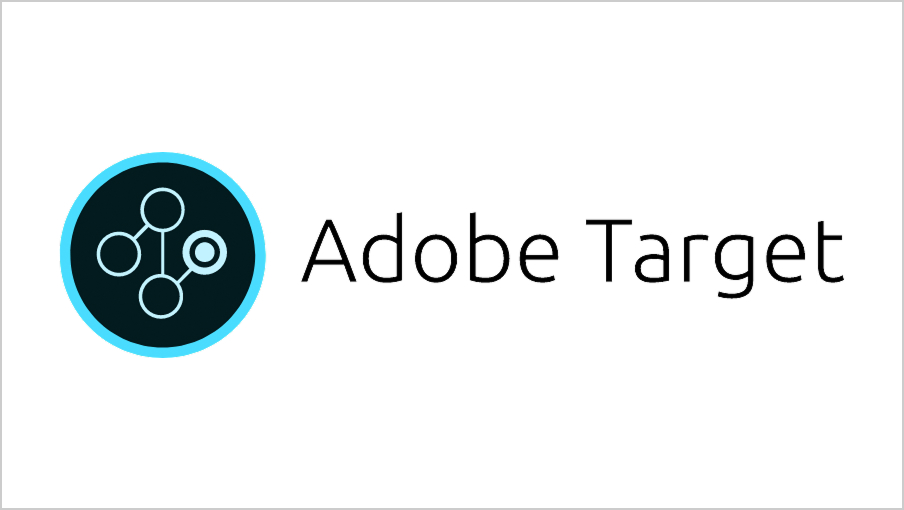
Adobe Target
Personalized Content and A/B Testing Platform
Supports content personalization and multi-version testing across channels such as websites, apps, and emails, and can integrate with AI engines to automatically recommend the best-performing version.
Use Cases:
- Test the impact of different page designs on conversion rates
- Display different content based on customer attributes
- AI-driven intelligent recommendations

Adobe Brand Concierge
High-Value Customer Engagement Platform
Offers exclusive content, service portals, and premium experience design to enhance brand prestige and loyalty.
Use Cases:
- Exclusive event invitations and management for VIP customers
- Integration portal for personal service
- Enhance satisfaction and repurchase rates among high-value users
4. Real-World Use Cases
Case Study: Enhancing Cross-Channel Retail Customer Experience
In the retail industry, where digital and physical channels coexist, consumer behavior changes rapidly. If brands fail to promptly understand customer needs and provide consistent, personalized experiences, they risk losing conversions and loyalty. Below is a real-world case of a large retail brand leveraging the various modules of Adobe Experience Cloud to successfully create an omnichannel customer experience.
1. AEM: Website and content management, enhancing brand consistency and content efficiency
- Use Adobe Experience Manager to create global websites and regional sub-sites, unifying content modules and page designs.
- Synchronize the management of product information pages, marketing campaign pages, and brand story content.
- The marketing team can quickly update promotional pages and materials without relying on IT.
✅ Results: Content maintenance efficiency increased by 50%, and marketing campaign launch time reduced by 30%.
2. Adobe Commerce: Create personalized shopping experiences and flexible checkout processes
- Implement Adobe Commerce to create a flexible product structure and checkout process.
- Integrate with RTCDP to provide personalized product recommendations and member discounts.
- Customers can view the most relevant products and pairing suggestions based on their recent purchase history, preferred styles, and regional inventory.
✅ Results: Homepage click-through rate increased by 40%, and product page conversion rate improved by 28%.

3. Adobe RTCDP: Integrate first-party data to build real-time audience profiles
- Integrate website behavior, e-commerce transactions, membership center data, in-store card swipes, and customer service information to establish a comprehensive first-party data lake.
- Create dynamic audience lists such as 'Potential VIPs', 'Recent Shoppers', and 'Highly Engaged Non-Buyers' to serve as the foundation for subsequent marketing activities.
✅ Results: Constructed over 30 high-value audience segments, increasing promotion hit rates by 20%.

4. Adobe Journey Optimizer: Instantly launch cross-channel personalized communication journeys
- When a customer views a specific product more than twice but does not purchase → Automatically initiate a reminder journey, offering discounts or similar product recommendations via Email + App push notifications.
- After a purchase is completed → Initiate a satisfaction survey + cross-selling journey (recommend related accessories or combo packs).
- Push themed promotions based on the customer's region and seasonal changes to provide a localized experience.
✅ Results: Overall open rate increased by 22%, with an automated journey conversion rate reaching 15%.

5. Adobe Customer Journey Analytics (CJA): Analyze the effectiveness of all journey touchpoints
- Connect website, e-commerce, email, app, and in-store POS behaviors to visualize customer paths.
- Analyze conversion paths and breakpoints for different audience segments to optimize engagement strategies.
- Regularly generate 'campaign performance reports' and 'audience interaction hotspot analyses' for internal decision-making.
✅ Results: Identified that the main reason for cart abandonment was due to shipping information not being displayed in time → After adjusting the checkout design, cart conversion rates improved by 12%.
5. Why Choose Adobe Experience Cloud?
In today’s business environment, companies face the complexity of managing multiple platforms, channels, and data sources. Effectively integrating content, data, and customer engagement processes has become key to enhancing brand competitiveness. Adobe Experience Cloud (AEC) offers a comprehensive solution designed to address this challenge.
5.1 Advantage of a Complete Ecosystem: An All-in-One Experience Closed-Loop Platform
Adobe Experience Cloud is not just a single-function tool but a modular, scalable, cross-department collaborative platform covering the entire process from content management to data analysis, from customer journey design to personalized actions.
The Five Platform Advantages of AEC:
Native Integrated Modular Architecture
Modules such as AEM, RTCDP, Marketo, Journey Optimizer, and CJA can seamlessly connect, achieving a complete cycle of "insight → action → optimization." This eliminates the need to rely on third-party integrations or data transformations.
Built-in AI-enhanced Capabilities
With Adobe Sensei and Firefly's AI engines, it automatically performs tasks such as content recommendation, material generation, audience prediction, and journey optimization. This enhances the level and precision of marketing automation.
Modular Licensing and Flexible Implementation
Businesses can choose to initially implement a single module based on their actual needs and budget (such as starting with AEM, RTCDP, or Marketo), and then expand to other modules later. This allows for the gradual construction of a comprehensive experience system in stages.
Multi-brand, Multi-language, and Multi-region Support
Adobe Experience Cloud (AEC) is highly suitable for international companies, supporting multi-brand websites, regional content management, and collaboration on multi-language versions. It ensures brand consistency while also accommodating localization needs.
Enterprise-grade Security and Privacy Compliance Design
Adobe Experience Cloud (AEC) meets regulations such as GDPR, CCPA, PDPO, and features comprehensive identity permission management, data governance, user consent management, and audit logging functionalities to ensure lawful and transparent data usage.
5.2 Versatility Across Industries: Flexible Application for All Sectors
Adobe Experience Cloud (AEC) is suitable for B2C, B2B, and hybrid enterprises and has been widely adopted in:
- Retail and E-commerce
- Finance and Insurance
- Manufacturing and Technology
- Travel and Cultural Institutions
- Government and Education Departments
Typical Use Cases:
- Retail Industry
Module Combination:AEM + Adobe Commerce + RTCDP
Brands can integrate customer behavior data from online and physical stores, combined with consistent shopping experience design, to achieve real-time recommendations and personalized promotions, improving conversion rates and customer lifetime value (CLV). - B2B Enterprises
Module Combination:Marketo Engage + CJA
Businesses can build automated lead nurturing journeys, leveraging advanced journey analytics to identify high-impact touchpoints and remarketing strategies, helping sales teams increase conversion rates and shorten the sales cycle.
5.3 Promoting Cross-Department Collaboration: More Than Just a Tool, It’s a Revolution in Workflows
What AEC creates is not just a technical upgrade but also a transformation platform for cross-department digital collaboration. It enables:
- Marketing teams to quickly create and schedule content
- Data analysts to monitor audience behavior and campaign performance in real time
- IT teams to manage platform architecture and integration securely
Through a unified platform, unified audience profiles, and unified operational processes, businesses can transition from “departmental silos” to “customer-centric integrated actions,” significantly improving efficiency and responsiveness.
6. International Recognition and Industry Endorsement
When choosing a digital experience platform, businesses consider not only functionality and pricing but also the product’s evaluation and positioning by global analysts. Adobe Experience Cloud has consistently received recognition from international authorities such as Gartner and Forrester, proving its leadership in product capabilities, innovation, and market strength.
6.1 Gartner: A Leader in “Digital Experience Platforms” for Consecutive Years
According to the 《2025 Gartner® Magic Quadrant™ for Digital Experience Platforms》 report, Adobe was once again named a Leader, ranking highly in both “Ability to Execute” and “Completeness of Vision.” This marks the eighth consecutive year that Adobe Experience Cloud has received this honor. The report highlights:
- Adobe offers the most comprehensive digital experience platform suite, covering content management, data integration, personalized experiences, and commerce capabilities.
- Adobe continues to drive platform innovation through AI (Sensei and Firefly).
- Its cloud architecture and modular design are suitable for large and medium-sized enterprise deployments.

References:
2025 Gartner Magic Quadrant for Digital Experience Platforms
6.2 Forrester: Multiple Products Rated as Leaders
Adobe has repeatedly received Leader ratings in Forrester Research evaluations, particularly excelling in core modules such as digital commerce, data platforms, and marketing automation:
- 《The Forrester Wave™: B2C Commerce Suites, Q2 2020》
Adobe Commerce (formerly Magento) was rated as a leader, offering high flexibility and scalability while effectively supporting B2C e-commerce experiences. - 《The Forrester Wave™: Real-Time Interaction Management, Q2 2022》
Adobe was rated as a leader, showcasing its industry-leading capabilities in integrating RTCDP and Journey Optimizer for real-time personalized journey management. - 《The Forrester Wave™: Marketing Automation Platforms, Q1 2022》
Marketo Engage remains a leader in the B2B marketing automation space, especially suited for businesses focused on lead nurturing and sales collaboration.

References:
Forrester Wave: Digital Asset Management Systems, Q1 2024
6.3 Industry Adoption: The Common Choice of Global Leading Brands
Currently, thousands of companies worldwide have chosen Adobe Experience Cloud as their core digital experience platform, including:
- Global brands like Microsoft, Coca-Cola, Nike, and BMW
- Tourism bureaus, large financial institutions, and retail groups in Asia
- Many listed companies and cross-border e-commerce platforms in Hong Kong and Taiwan
These achievements further demonstrate that AEC is not only a technological leader but also a practical and scalable solution for businesses.
7. Pricing
Flexible Licensing Model, Tailored to Business Scale and Needs
Adobe Experience Cloud does not adopt a single price point but instead uses a subscription-based licensing and modular billing based on the enterprise’s needs and used modules. Its pricing structure is highly flexible, allowing businesses of different sizes and digital maturity levels to find suitable entry and expansion solutions.
The Pricing Logic of Adobe Experience Cloud
Adobe’s subscription prices are primarily calculated based on the following factors:
1. Types of Product Modules Used: Such as AEM, RTCDP, Marketo, Journey Optimizer, etc., each module is independently licensed and can be purchased individually or in combination.
2. Usage Metrics: For example, traffic (Page Views), data storage capacity, number of campaign participants, audience size, API calls, commonly seen in modules like AEM Sites, RTCDP, Analytics, Marketo, etc.
3. Number of Users: The number of backend management accounts, applicable to modules such as AEM Assets, Workfront, etc.
4. Deployment Method: AEM offers choices between Cloud Service (cloud deployment) or On-premises (local deployment), with different deployments affecting the price.
5. Enterprise Type and Region: Depending on the industry, scale, and region of the enterprise, Adobe may offer exclusive discounts or plans.
Pricing Examples (Unofficial Quotation, for Reference Only)
| Module | Price Range (Annual License) | Notes |
|---|---|---|
| Adobe Experience Manager (AEM Sites) | Starting from approximately USD 60,000 | Pricing based on website scale and functional extensions |
| Adobe Real-Time CDP | Starting from approximately USD 80,000 | Billed according to data volume and campaign audience size |
| Adobe Journey Optimizer | Starting from approximately USD 50,000 | Calculated based on push notification volume and use cases |
| Adobe Commerce | USD 40,000 to 200,000 | Pricing based on annual transaction volume and module combinations used |
| Adobe Marketo Engage | Starting from approximately USD 35,000 | Licensed based on the number of contacts (Leads) |
| Adobe CJA | Depends on integration sources and data usage | Can be bundled with Adobe Analytics licensing |
Note: Actual prices need to be provided by authorized agents (such as Leads Technologies) based on your business scale and needs. Different regions and plans may also offer discount promotions or implementation assistance programs.
8. How to Get Started?
From Identifying Pain Points to Actual Deployment, Step-by-Step Experience Upgrade
Implementing Adobe Experience Cloud (AEC) does not need to be done all at once. Instead, it can be carried out progressively in phases based on the current status and strategic goals of the enterprise. The process is divided into two main stages: the “Evaluation Stage” and the “Implementation Stage,” helping businesses find the most suitable adoption path.
8.1 Evaluation Stage: Confirm Requirements and Prioritize Adoption
- Identify Key Pain Points
First, return to the current state of your business and customer experience to evaluate the bottlenecks in your current systems and user pain points:
| Common Pain Points | Corresponding AEC Solutions |
|---|---|
| Fragmented customer data, lack of a holistic view | Adobe Real-Time CDP (RTCDP) |
| Inefficient marketing asset creation and collaboration | Adobe Workfront + AEM |
| Difficulty reusing website content, challenges with multi-language translation | Adobe Experience Manager |
| Inability to precisely segment marketing campaigns, insufficient personalization | Adobe Journey Optimizer / Marketo |
| Inability to measure conversion effectiveness across channels | Adobe Customer Journey Analytics (CJA) |
- Select Priority Modules for Initial Adoption (Recommended to Start with One Pain Point)
Based on the pain point analysis, businesses can choose the most impactful module as a starting point and gradually integrate other modules. For example:
- Start with Content Efficiency: Begin with AEM + Workfront to establish a content hub and automate workflows.
- Start with Data Integration: Begin with RTCDP to unify customer profiles and support integration with other modules.
- Start with Customer Engagement: Prioritize Journey Optimizer or Marketo to automate journey communication.
👉 It is recommended to choose the most obvious pain point with the quickest visible results as the starting point, which helps build internal consensus and secure resources.
8.2 Implementation Stage: Establish Foundations, Integrate Processes, and Foster Internal Consensus
- Data Preparation: Clean First-Party Data and Set Up Unified IDs
Before implementing modules like RTCDP or CJA, businesses need to consolidate and integrate various data sources (CRM, membership systems, web tracking, POS, etc.), clean the data, and design corresponding fields.
- Set up a unified customer ID (e.g., email or membership number).
- Clarify data authorization and privacy policies (GDPR / PDPO).
- Establish data inflow strategies and update frequencies.
- Content Management Process Establishment and Modularization
If implementing AEM, it is recommended to simultaneously establish modularized content and translation processes:
- Break down pages and content into reusable components (e.g., Banner, CTA, product blocks).
- Design workflows and approval mechanisms (Workfront can assist with this).
- Create regional content sharing and localization collaboration frameworks.
- Team Training and Cross-Department Collaboration Mechanisms
Adobe Experience Cloud involves collaboration between marketing, IT, and data teams. During implementation, it is recommended to:
- Conduct role-based training (e.g., marketing users vs. data engineers).
- Establish a “cross-department working group” to coordinate needs and resources.
- Regularly review implementation progress and optimization directions.
8.3 Tips for Implementation:
| Implementation Key Points | Suggested Practices |
|---|---|
| Prioritize Building an MVP (Minimum Viable Experience) | Start by adopting one functional module and applying it to one business scenario to quickly validate its value. |
| Data Governance and Privacy Compliance | Ensure first-party data is legal and transparent, with clear management and deletion mechanisms in place. |
| Performance Tracking and Reporting | Use Adobe Analytics / CJA to regularly track the benefits of implementation. |
| Flexible Expansion Planning | Design modules with scalability in mind, allowing for subsequent integration of Commerce, Target, and other functionalities. |
9. Future Trends: AI and Privacy Compliance
Anticipating the Next Wave of Digital Experience Innovation
As digital marketing and customer experience continue to evolve, two major trends are profoundly changing how businesses operate:
- Generative AI Accelerates Content Production and Personalized Experiences
- Data Privacy and the Disappearance of Cookies Drive Reconstruction of First-Party Data Strategies
Adobe Experience Cloud has proactively laid out plans for these two trends, enabling businesses to increase efficiency while complying with regulations and building consumer trust.
9.1 GenStudio How Generative AI Accelerates Content Production Cycles?
Launched by Adobe in 2023, Adobe GenStudio is a new toolkit that integrates Adobe Firefly generative AI engine with AEM content modules, aimed at significantly enhancing the speed of marketing content production and personalization capabilities.
Core Capabilities:
- Automatically Generate Materials: Quickly produce multiple versions of images, copy, videos, etc.
- Instantly Adjust Styles and Tones: Automatically apply style templates based on brand tone.
- Content + Audience Interaction: Automatically generate corresponding content versions based on RTCDP customer segmentation.
Practical Application Scenarios:
| Application Scenario | Benefits |
|---|---|
| Need to generate 10 types of audience-specific copy for large-scale email campaigns | Firefly quickly generates tone-appropriate and offer-combination texts, saving time and effort. |
| A/B testing requires numerous image variations | Rapid image modification, color adjustment, text changes, coupled with Adobe Target for automated testing. |
| Event pages require multi-language versions and cultural localization | Combine GenStudio + AEM to swiftly create multilingual materials and localized messages. |
Summary of Benefits:
- Reduces marketing material production time by up to 60%.
- Decreases reliance on external design services, strengthening brand consistency and flexibility.
- More rapidly achieve true “one-to-one” personalized content experiences.
9.2 RTCDP’s First-Party Data Strategy in a Cookie-Less Era
With mainstream browsers like Google Chrome phasing out third-party cookies, businesses need to establish new data strategies to maintain marketing accuracy and customer continuity. Adobe Real-Time CDP provides a comprehensive first-party data management solution, helping businesses build a reliable data foundation for the future.
RTCDP Response Strategy:
- Unify First-Party Data Sources (website behavior, app activities, CRM, POS, Email, etc.)
- Support Anonymous Visitor Identification and ID Stitching (link device behaviors with subsequent login information)
- Establish Data Governance Policies and User Consent Management Mechanisms (Consent Management)
- Implement Privacy Sandbox, Data Clean Room, and Other New Generation Integration Technologies
Actual Benefits:
- Maintains cross-device tracking and remarketing capabilities even without cookies.
- Complies with regional privacy requirements such as GDPR, CCPA, Hong Kong’s Personal Data (Privacy) Ordinance.
- Builds data assets based on customer trust, enhancing brand image and long-term relationships.
9.3 Adobe’s Future Roadmap: A New Era of Experiences Where AI and Privacy Coexist
Adobe has made generative AI and privacy compliance the two core strategies of Experience Cloud. Future developments will focus on:
| Development Direction | Description |
|---|---|
| AI-Native Marketing Processes | Every Adobe tool will have built-in AI assistants and recommendation features to accelerate decision-making and execution. |
| Self-service Data Privacy Management Interface | Provides users with transparent permissions for data authorization, access, and deletion. |
| Cross-platform Identity Unification and Synchronization Technology | Enhances identity graphs and real-time synchronization to maintain user experience continuity. |
| Automatic Integration of Content + AI + Segmentation | Fully automatic content delivery through AEM + GenStudio + RTCDP will become routine. |
10. User Testimonials
Retail Industry | Brand Director, Asia-Pacific Apparel Group
"We used AEM to build a unified global site management system and leveraged RTCDP to integrate customer behavior data to drive personalized marketing. Now, whenever users interact on any channel, the content they see responds instantly to their needs, which has significantly boosted our repurchase rate and brand loyalty."
Financial Industry | Data Science Head, Regional Bank
"Previously, data from each of our channels was siloed, making it very difficult to see the overall customer journey. After adopting Adobe Journey Optimizer and Customer Journey Analytics (CJA), for the first time, we were truly able to understand 'who this customer is, what they have experienced, and why they haven't converted.' This has been immensely helpful for our product design and marketing strategies."
Manufacturing Industry | Global Marketing Manager, Industrial Technology Enterprise
"Marketo Engage has helped us automate the cumbersome B2B lead communication process, and with Adobe Analytics we can analyze response rates and journey performance. Now, our marketing team can focus more on strategy rather than daily email sending and tracking."
Tourism and Cultural Institution | IT Director, Government Tourism Board
"We started by adopting Adobe Experience Manager (AEM) for content management and then integrated it with Adobe Campaign to manage multi-language event notifications. Users from different languages and regions are now able to receive localized content and time-sensitive information, which has significantly increased our user engagement rates."
11. Conclusion: The Key Next Step to Creating a Seamless Customer Experience
In the new era dominated by the experience economy, businesses seeking to build truly sustainable competitiveness can no longer rely solely on increasing exposure, expanding traffic, or boosting promotions. Instead, they need to fundamentally rethink every detail of how customers interact with their brand. Adobe Experience Cloud is the ideal partner to help businesses achieve this transformation.
Through a comprehensive overview of its architecture, this article has guided you from understanding the background of experience transformation to grasping the core value, functional modules, practical applications, and future directions of Adobe Experience Cloud. We’ve also demonstrated, through real-world case studies and user feedback, how AEC helps businesses across various industries break down data silos, enhance content consistency, optimize customer journeys, and ultimately create scalable personalized experiences.
Whether your business is at the starting point of digital transformation or in the advanced stages of optimization, Adobe Experience Cloud offers a modular and scalable solution that enables marketing, IT, and data teams to collaborate effectively and drive continuous innovation centered around the customer.
Recommended Resources and Actionable Suggestions:
- Deepen Your Learning:
Visit Adobe Experience League to register for free and choose a personalized learning path based on your role to quickly master practical operations for each module. - Evaluate Your Current Situation:
Assess gaps and challenges in data integration, content efficiency, and personalized interactions, prioritizing areas that need improvement. - Consult with Experts:
Contact Adobe’s professional partners (such as Leads Technologies) to arrange needs assessments and product demonstrations, creating a tailored implementation plan that fits your business requirements. - Start Small and Scale Gradually:
Begin with a single module (such as AEM or RTCDP), validate its effectiveness, and then progressively expand to a complete experience loop.
Contact Us
If you’d like to learn more about Adobe Experience Cloud’s product information, feature application suggestions, or obtain a customized quote and implementation plan, feel free to contact us at Leads Technologies. With extensive experience implementing Adobe solutions and a team of experts, we are committed to helping businesses achieve success in every step of their digital experience journey.
12. References
- Adobe Experience Cloud Official Website
https://business.adobe.com/hk_en/products.html - Adobe Real-Time CDP Data Overview
https://business.adobe.com/products/real-time-customer-data-platform/rtcdp.html - Adobe Experience Manager (AEM) Introduction
https://business.adobe.com/products/experience-manager/adobe-experience-manager.html - Adobe Customer Journey Analytics (CJA)
https://business.adobe.com/products/adobe-analytics/customer-journey-analytics.html - Adobe Firefly and GenStudio
https://www.adobe.com/products/firefly.html
https://business.adobe.com/hk_zh/products/genstudio-for-performance-marketing.html - Adobe Experience League Learning Resources
https://experienceleague.adobe.com/ - Forrester Wave: Digital Asset Management Systems, Q1 2024
https://business.adobe.com/resources/reports/forrester-wave-digital-asset-management-2024.html - 2025 Gartner Magic Quadrant for Digital Experience Platforms
https://business.adobe.com/resources/reports/gartner-mq-digital-experience-platforms-2025.html


